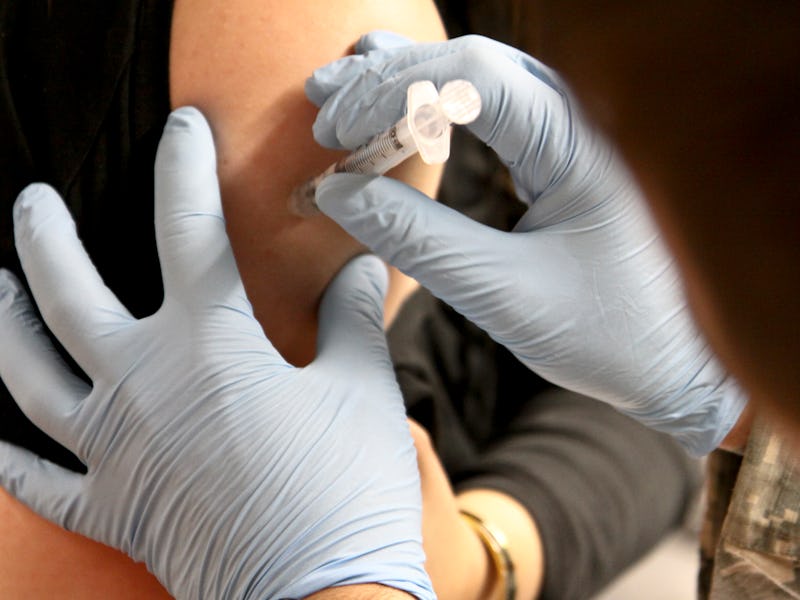Here's How the Government Shutdown Will Make it Harder to Combat the Flu
The CDC's efforts could be crippled by the shutdown.

The 2017-2018 flu season is already bad, and it’s shaping up to get significantly worse in the wake of the partial government shutdown, as government offices charged with protecting public health will be short on resources and staff. Frozen government funding will drastically reduce the Centers for Disease Control and Prevention’s monitoring and response capabilities, according to a 2018 contingency plan from the U.S. Department of Health and Human Services.
The 2018 contingency plan specifies that 50 percent of HHS staff will remain at work, while the other half will be furloughed (temporarily laid off, though retroactively paid once the government is running again). It’s not clear how those numbers are broken down among the various HHS agencies, which include the CDC, Food and Drug Administration, National Institutes of Health, and others. In the midst of a flu season that’s dominated by a more aggressive strain of the virus, this reduction in staff could cripple the CDC’s ability to respond to the shifting epidemic.
Influenza A(H3N2) is the dominant flu strain this flu season, and it's exceptionally yucky.
“CDC will continue minimal support to protect the health and well-being of US citizens here and abroad through a significantly reduced capacity to respond to outbreak investigations, processing of laboratory samples, and maintaining the agency’s 24/7 emergency operations center,” reads the contingency plan.
This isn’t the first time the U.S. has experienced a government shutdown, so agencies have some familiarity with how things will play out. But that doesn’t mean it’s going to be easy.
Tom Frieden, who was the CDC director during the 2013 shutdown, tells NPR that the agency ground to a halt.
“It was really a terrible time,” he said. “In my nearly eight years as CDC director, it was the only time I felt like I couldn’t do my job of protecting Americans. We had to furlough — or temporarily lay off — 8,754 staff. And they were people who had been protecting Americans the day before and couldn’t once the shutdown started.”
Frieden describes how laboratory samples stacked up as they arrived from hospitals all over the country, how labs stood empty with equipment requiring technicians’ attention, and how the staff left at the CDC weren’t equipped to handle the public health demands that are indifferent to whether the government is working or not.
When Inverse reached out to the CDC for comment, our call was sent to a voicemail box that explained that the CDC’s newsroom staff has been furloughed and will not be available for comment until a budget or continuing resolution has been secured.